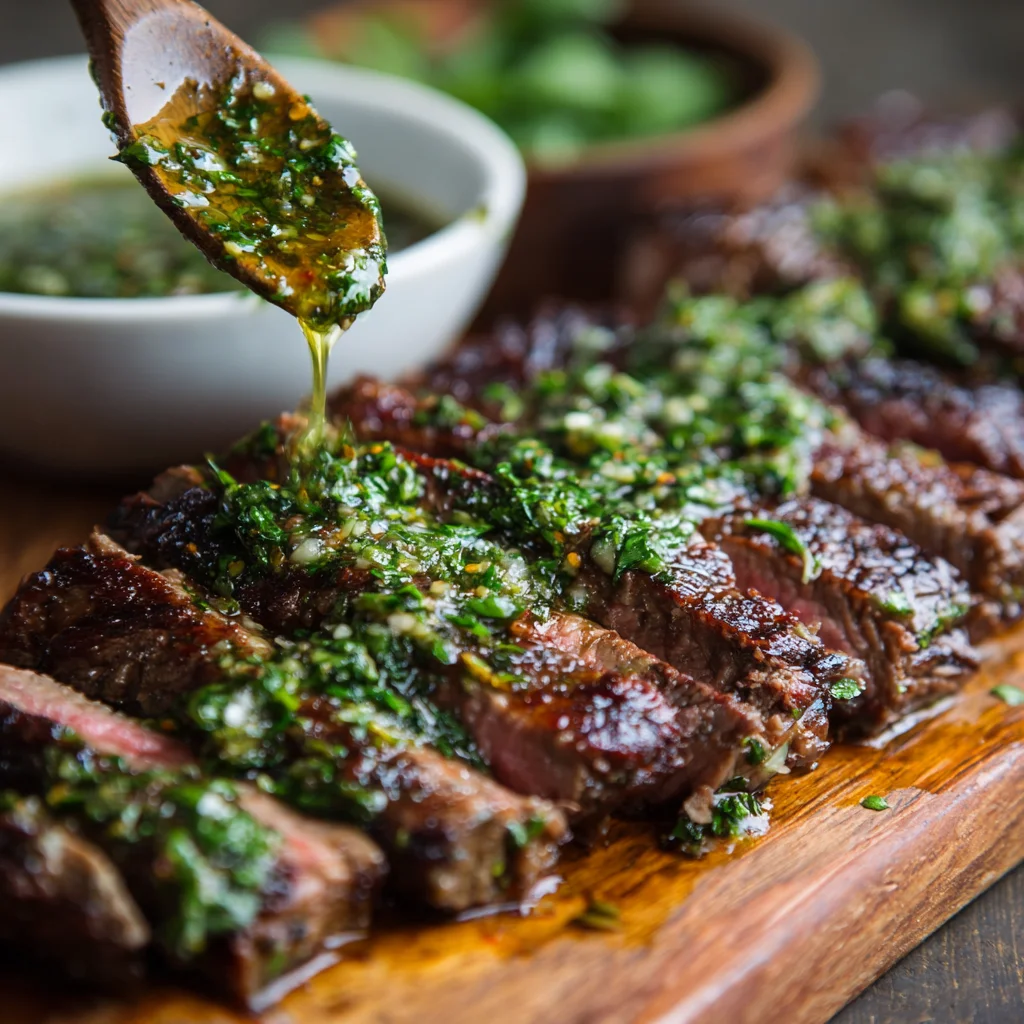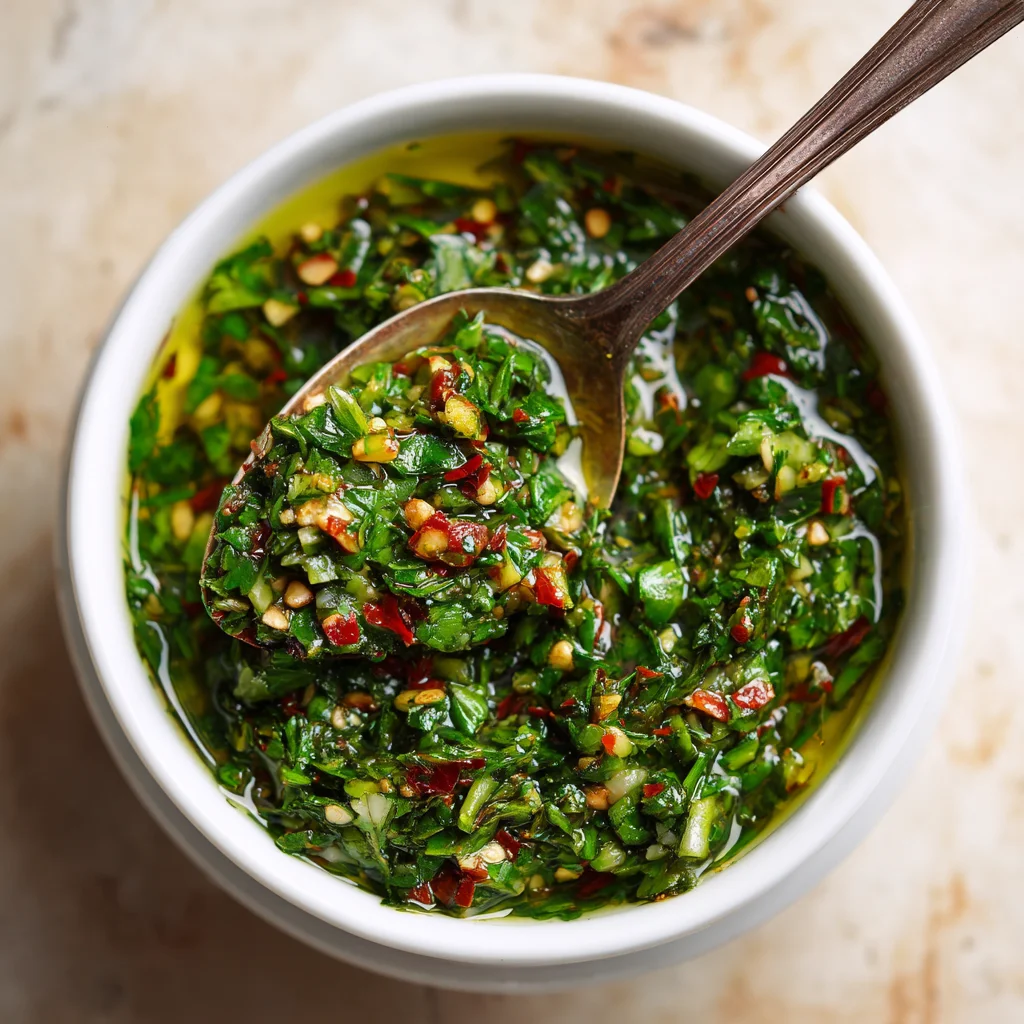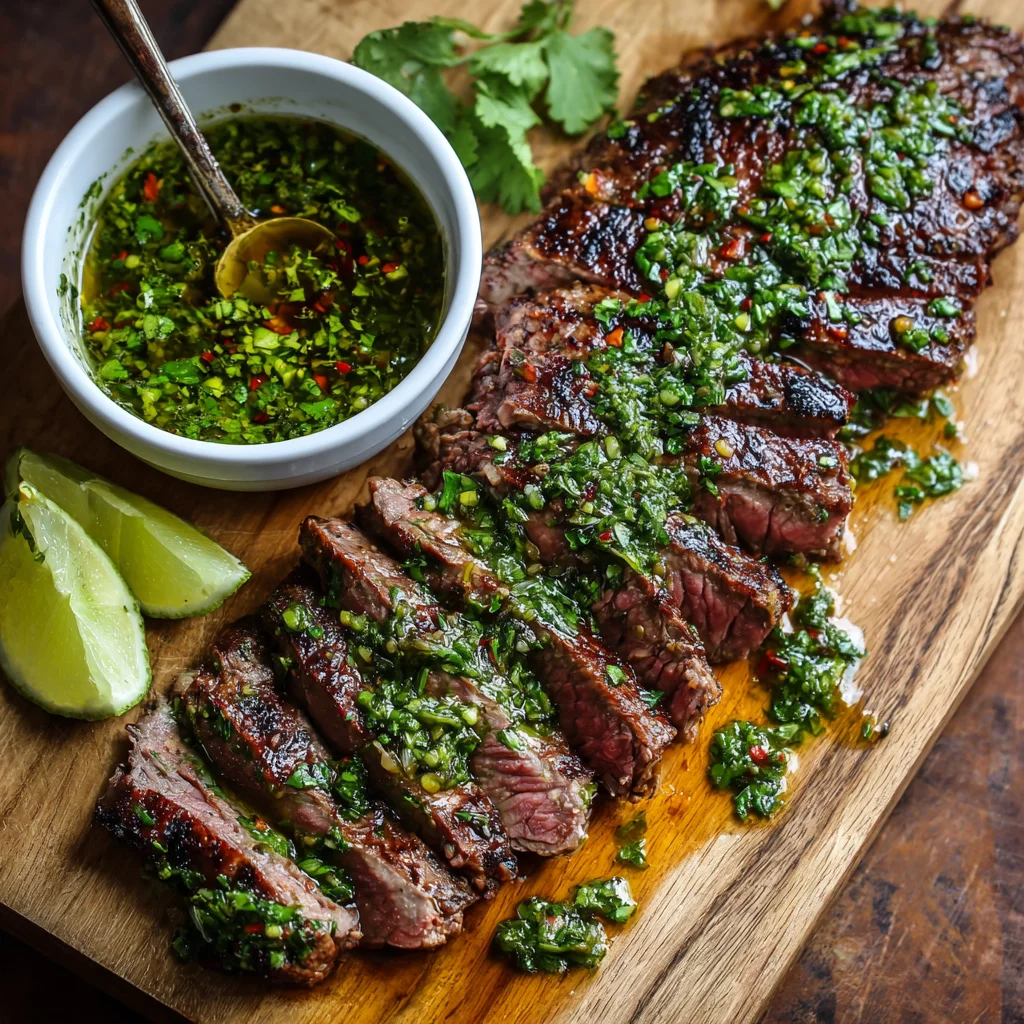Chimichurri Sauce Recipe – Fresh Herbs, Big Flavor, Zero Fuss
Chimichurri might sound fancy if you’ve never made it, but it’s honestly one of the easiest and most flavor-packed sauces you can whip up. Hailing from Argentina, this vibrant green sauce is the stuff of grill-night dreams—bright herbs, zippy vinegar, a little garlic punch, and olive oil to tie it all together.
Traditionally served with grilled steak, chimichurri has made its way into everything from tacos to roasted veggies. And it’s no wonder—once you try it, you’ll want to drizzle it on everything.

🧄 Ingredients You’ll Need
Keep it simple and fresh—this is one of those recipes where the ingredients really shine.
- 1 cup fresh flat-leaf parsley (finely chopped)
- ¼ cup fresh oregano (or 2 tsp dried oregano)
- 3–4 garlic cloves (minced)
- ½ teaspoon red pepper flakes (adjust to taste)
- ½ teaspoon kosher salt
- ¼ teaspoon black pepper
- 2 tablespoons red wine vinegar
- ½ cup extra virgin olive oil
- Optional: 1 tablespoon lemon juice (for extra brightness)
🥣 How to Make Chimichurri Sauce
1. Chop the Herbs
Use a sharp knife to finely chop the parsley and oregano. You want a coarse texture—not a puree.
2. Combine Everything
In a bowl, mix the herbs with garlic, red pepper flakes, salt, pepper, vinegar, and lemon juice (if using). Stir well.
3. Add the Olive Oil
Slowly stir in the olive oil. Mix until the sauce is well combined but still loose in texture.
4. Let It Sit (If You Can Wait)
Chilling for 30–60 minutes allows the flavors to mellow and meld. But it’s also great right away.
That’s it. No blender needed. No fancy steps. Just bold, herbaceous goodness.
⏱️ Time & Serving Info
- Prep time: 10–15 minutes
- Rest time (optional): 30 minutes
- Total time: 15–45 minutes
- Yields: About ¾ cup (6–8 servings)
🔪 Kitchen Tools You’ll Need
- Sharp knife
- Cutting board
- Mixing bowl
- Spoon or fork for mixing
- Optional: food processor (if you want a finer blend)

🧂 Extra Tips to Make It Just Right
- Fresh is everything. Skip the dried parsley here—fresh herbs are key.
- Don’t overblend. A chunky, rustic texture gives the sauce more character.
- Customize the acid. Red wine vinegar is classic, but white wine or sherry vinegar also work great.
- Too sharp? Add a pinch of sugar or an extra splash of oil to mellow things out.
- Heat preference? Adjust the red pepper flakes up or down to taste.
🍽️ How to Serve Chimichurri Sauce
This sauce is the MVP of grilled dishes, but it’s not just for steak. Try it with:
- Grilled or roasted vegetables
- Chicken thighs or drumsticks
- White fish like cod or mahi mahi
- Tofu or roasted chickpeas
- As a sandwich spread or taco topper
- Drizzled over eggs, pasta, or baked potatoes
Basically… anything that needs a flavor lift.
🧊 Storage Tips
Fridge:
Store in a glass jar or sealed container for up to 5 days. Stir before serving—some oil separation is normal.
Freezer:
Yes, you can freeze it! Spoon into an ice cube tray, freeze, then transfer cubes to a freezer bag. Thaw as needed. It keeps for about 2 months frozen.
🔍 Nutrition Breakdown (Per Serving – ~2 tablespoons)
- Calories: 140
- Fat: 14g
- Saturated Fat: 2g
- Carbohydrates: 1g
- Fiber: 0.5g
- Sugar: 0g
- Protein: 0.5g
- Sodium: 120mg
Based on a traditional olive-oil base without added sugar or lemon.

📝 Recipe Notes
- This version is naturally gluten-free, vegan, keto-friendly, and low-carb.
- You can substitute cilantro for part of the parsley if you’re feeling adventurous.
- Make it smoother by pulsing everything in a food processor—just don’t blend it too fine.
Frequently Asked Questions
Conclusion
Whether you’re lighting up the grill or just tossing together a quick lunch, chimichurri is one of those sauces that brings everything to life. It’s herby, punchy, and made from stuff you probably already have in your kitchen. Honestly? Once you make it, you’ll start finding excuses to use it.







